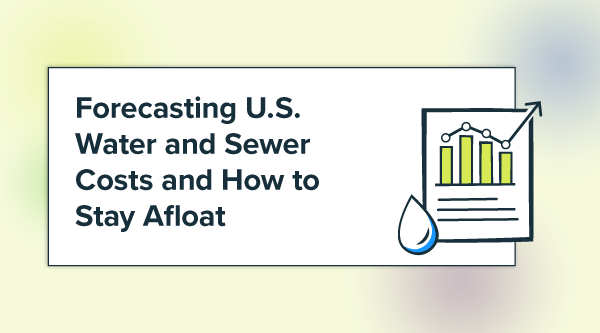This blog was written by our hardware partners, EpiSensor, with the goal of educating energy and sustainability leaders about hardware implementation best practices. Thank you EpiSensor for lending your expertise.
Embarking on a journey to optimize your organization’s energy usage in 2024? Want to learn how to make your energy spend go further?
In this blog, we’ll provide you with insights on how to get started with real-time data, hardware implementation, and efficient energy management.
Identify your Energy Monitoring Goals: Reducing Costs, Enhancing Efficiency, and Embracing Sustainability
Before delving into energy monitoring, pinpoint your objectives. Whether it’s cost reduction, improved efficiency, sustainability, or a blend of all three, refining your goals will be critical at the outset.
Understanding Energy Monitors and Their Evolution
Legacy electricity monitoring systems and standard utility company meters often lack the precise accuracy, flexibility, and efficiency that modern IoT solutions provide. Internet of Things (IoT) energy monitoring systems are advanced technological solutions that leverage interconnected devices installed on your premises to collect, analyze, and manage data related to energy consumption and usage patterns. Critically, this data is in real-time, as opposed to waiting on a utility bill or breakdown.
Utilizing IoT sensors and meters, combined with an easy-to-navigate energy management platform enables you to easily retrieve and analyze energy consumption data that empowers you to make informed decisions regarding your company’s future energy usage. Data derived from an effective electricity monitoring system can help you identify high-energy consuming assets and departments, enable you to reduce your organizations’ environmental impact and drive efficiency across your entire business network.
What you should look for in an energy monitoring system
When choosing energy monitoring infrastructure, you should look for the following attributes and features:
- Real-time Insights: Advanced energy monitoring systems provide real-time insights into energy consumption, allowing users to track usage patterns, identify inefficiencies, and make rapid decisions.
- Wireless Connectivity: While most electricity metering systems are wired, there are some that operate wirelessly, enabling ease of installation and commissioning on-site, minimizing the impact on your existing infrastructure.
- Zigbee Wireless Communications: Ensure your energy management system operates on Zigbee wireless communications, with Zigbee providing quick and easy Over-the-Air firmware updates and self-healing capabilities. These are features that contribute to security and ensure no data loss.
- Accuracy: Aim for a high level of accuracy, i.e. Class 1 calibrated electricity monitors, providing granular insights for optimal energy management.
- Easy to Integrate Data: Choose a system that is easy to integrate with your chosen energy management platform and any existing BMS (Building Management System). This will make it easier to identify energy consumption trends, high-energy consuming assets, anomalies, waste, and areas for improvement in energy efficiency.
- Ease-of-Installation: It might sound basic, but choose a system that can be deployed by any qualified electrician, rather than having to enlist the expertise of specialist engineers.
- Remote Monitoring Capabilities: Advanced IoT electricity usage monitoring systems offer the ability to control and adjust energy-consuming devices remotely, contributing to efficient energy management.
- Scalability: IoT energy monitoring solutions are typically scalable, allowing you to expand the system as needed, accommodating the growing complexity and size of your company or group structure.
- Security: Lastly, verifying that the chosen system offers data security from sensor to server is crucial, to ensure you are safeguarding your organization’s data against any potential compromise.
Translating Data into Real Results
The possibilities are vast when it comes to the data generated by your energy monitoring infrastructure. We recommend you keep it simple and choose data points that are most valuable to you and your business.
Choose an energy management platform with an intuitive interface that facilitates easy navigation and usage. A user-friendly interface will help promote adoption within your firm, increase efficiency, and drive positive change.
What can you expect to achieve?
Obtain accurate and valuable baseline energy consumption data for your entire organization. This data can then be used to enhance internal operations and establish a foundation for future energy upgrades, driving efficiency and reducing spend.
Mitigate bill fluctuations and shocks, by anticipating energy costs before billing through real-time analysis and accuracy. Ensure compliance with ESG and sustainability requirements (or self-imposed ‘Net Zero’ targets) by tracking energy consumption accurately and systematically.
Overall, expect to implement an efficient and sustainable energy management system that can expand and adapt as your business needs change.
Getting Started
Ready to start making savings and reducing your environmental impact?
EnergyCAP and EpiSensor, with their user-friendly software and advanced IoT energy monitoring solutions, empower your journey toward efficient energy management. Whether it’s billing management, ESG reporting, or driving overall efficiency, EnergyCAP and EpiSensor set you on the path to leverage precise energy insights for your business.
Learn more about EpiSensor
Learn more about EnergyCAP SmartAnalytics
Book a demo with our experts today.
Best-in-class portfolio-level energy and utility bill data management and reporting.
Real-time energy and sustainability analytics for high-performance, net-zero buildings.
A holistic view of financial-grade scope 1, 2, and 3 carbon emissions data across your entire business.
Energy and sustainability benchmarking compliance software designed for utilities.






